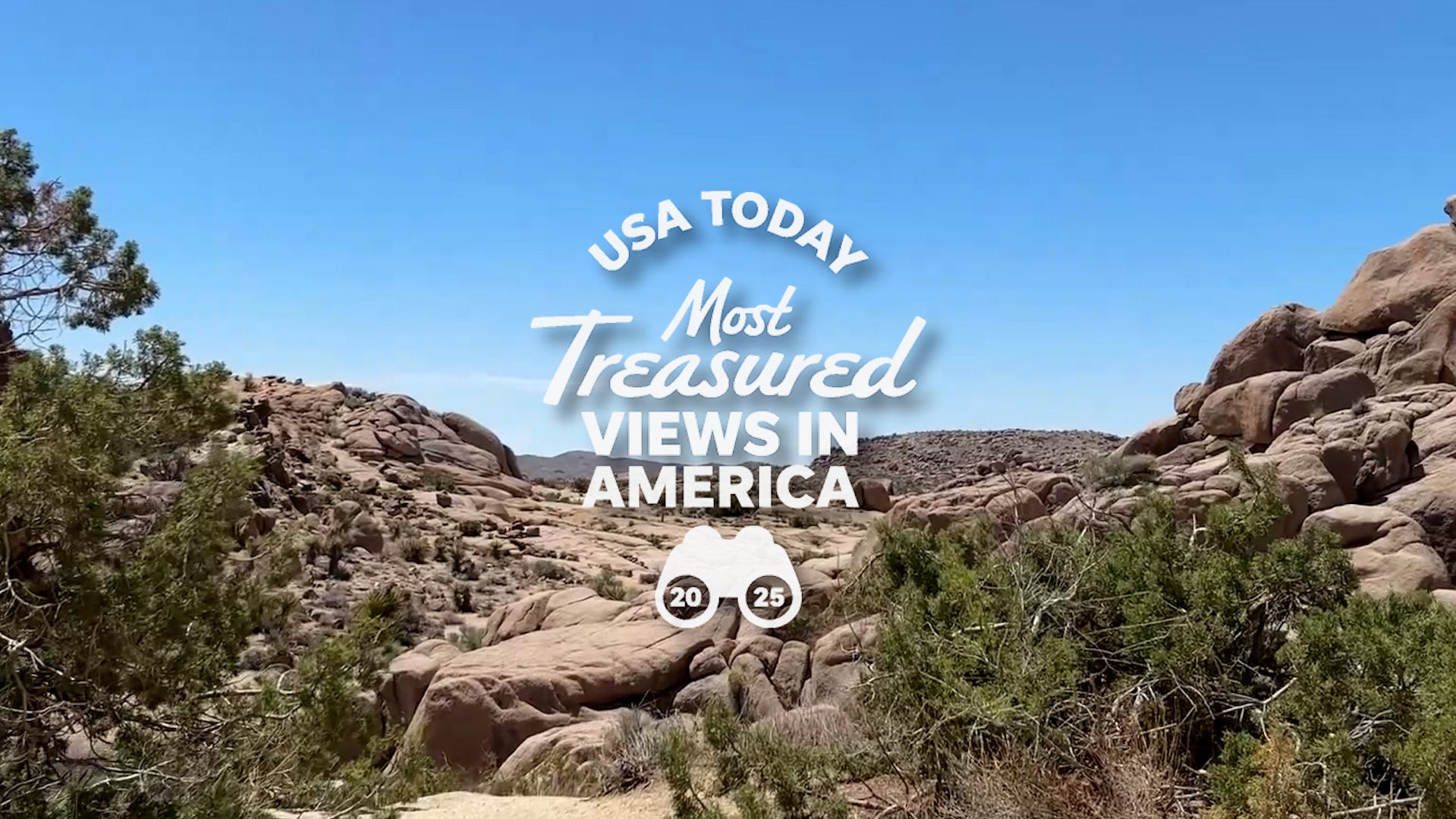This American treasure is the closest you'll get to walking in Mars

- Moab, Utah, offers a Mars-like red rock desert landscape sculpted over millions of years.
- Arches and Canyonlands National Parks are iconic destinations within Moab, showcasing unique rock formations.
- Visitors can enjoy diverse outdoor activities, including hiking, rafting, biking, off-road Jeeping, and rock climbing.
“Experience America” is a five-part series that showcases often-overlooked destinations and experiences in our backyard.
MOAB, Utah — I can only describe hiking through Moab's red rock desert as feeling like you're trekking across the surface of Mars.
Delicately balanced boulders seem as if they could tumble down at any second, while rock spires jut into the sky like natural skyscrapers. Arches curve over the sky like sandstone-colored rainbows. Everything is bathed in warm hues of clay, sandstone and sienna.
For as far as the eye can see, the Colorado Plateau provides visitors with such otherworldly geography to explore, sculpted by ancient seas, tectonic uplift and erosion throughout millions of years.
Moab's landscape – including the famous Arches National Park and lesser-known Canyonlands National Park – is iconic for being home to these rock formations, but to witness their scale in person is an entirely different experience than seeing them in a photograph.
"(The landscapes are) incredible, awe-inspiring and wonder-inspiring. You feel like you're on another planet, right?" said Michelle Beebe, my guide for the Women's Best of Moab Basecamp Tour with Wildland Trekking, an Intrepid Travel Company. The energy here is spectacular and every time you come back here, it's just like something that comes over your body."
Being surrounded by such striking nature is the perfect escape for travelers needing a break from their daily routine, and Moab offers a wide variety of outdoor adventures to choose from.
Pick your adventure
Moab offers easy access to desert exploration, being situated close to Arches National Park and Canyonlands National Park – two of Utah's Mighty 5 national parks. (The others are Zion National Park, Capitol Reef National Park and Bryce Canyon National Park.)
Arches is the more famous of the two parks, with over 2,000 stone arches among other rock formations, and you could cover the highlights in a single but long day. As Utah's largest national park, Canyonlands National Park is divided into three districts – Island in the Sky, the Needles and the Maze – demanding more exploration time. With each district having such distinct geography, it's worth taking your time here and dedicating at least a day to one.
Travelers can pick from a diverse range of outdoor activities, depending on the adrenaline rush they're seeking. There's hiking, whitewater rafting on the Colorado River, biking and off-road Jeeping, where a four-wheel Jeep conquers rocky, often steep terrain. Moab is also a rock climber's paradise, where brave climbers and canyoneers can ascend the fins and plateaus with professional guides from outfitters such as Moab Cliffs and Canyons, the area's oldest.
A hiker's haven
One of the best ways to experience Moab is on foot on one of its many hiking trails. This was my mode of exploration, hiking several that took me through different landscapes with a variety of vistas. Here are some of my favorites:
- Elephant Hill in Canyonlands National Park's Needle District: My trip's longest hike at nearly six miles, Elephant Hill took me through slot canyons and past mushroom-shaped boulders, plus the namesake giant rock carved in the shape of an elephant's body. The highlight was reaching the end to overlook the seemingly countless rock spires, with their layered shades of red, brown and tan.
- Fisher Towers: On BLM land, Fisher Towers was an approximately five-mile-long trail that got me up close and personal to three behemoth towers (also a favorite of climbers), the largest being over 6,000 feet tall, aptly named The Titan. This trail wound through canyons and along the ledges, and looking up at the towers made me feel incredibly small.
- Delicate Arch in Arches National Park: There's a reason why this is the park's most famous arch; the 46-foot-high rock structure sits on the edge of a cliff with the backdrop of the Colorado Plateau. The hike is about three miles, with some steep drop-offs and inclines on slick rock.
Camping
Downtown Moab is home to a slew of accommodations, but I'd argue one of the best ways to fully immerse yourself in the desert is by camping. I stayed at the Bureau of Land Management's Big Bend Bend Recreation Site, which is set right along the Colorado River with easy access to Arches National Park and other trails like Fisher Towers. However, you could also camp directly in Arches National Park or Canyonlands National Park, and you'll need to reserve a site ahead of time during the peak season between spring and fall.
How to get there
Canyonlands Regional Airport (CNY) is the closest commercial airport to Moab, about a 20-minute drive to the center of town. While no major airlines serve CNY, you can take a short flight on American Airlines' regional carrier Contour Airlines from Phoenix Sky Harbour International Airport (PHX) and Denver International Airport (DEN).
There are no rideshares operating in Moab, so if you need a ride from the airport to your hotel, you'll have to reserve transportation ahead of time. I took the Moab Express Shuttle, and it was an easy door-to-door drop off.
The scenes from my time in Moab stand out in my memory, just because I've never been surrounded by such powerful natural formations and landscapes. While I may not consider myself a desert rat just yet, I certainly see the appeal.
The reporter on this story received access to this event from Intrepid Travel. Paste BN maintains editorial control of content.